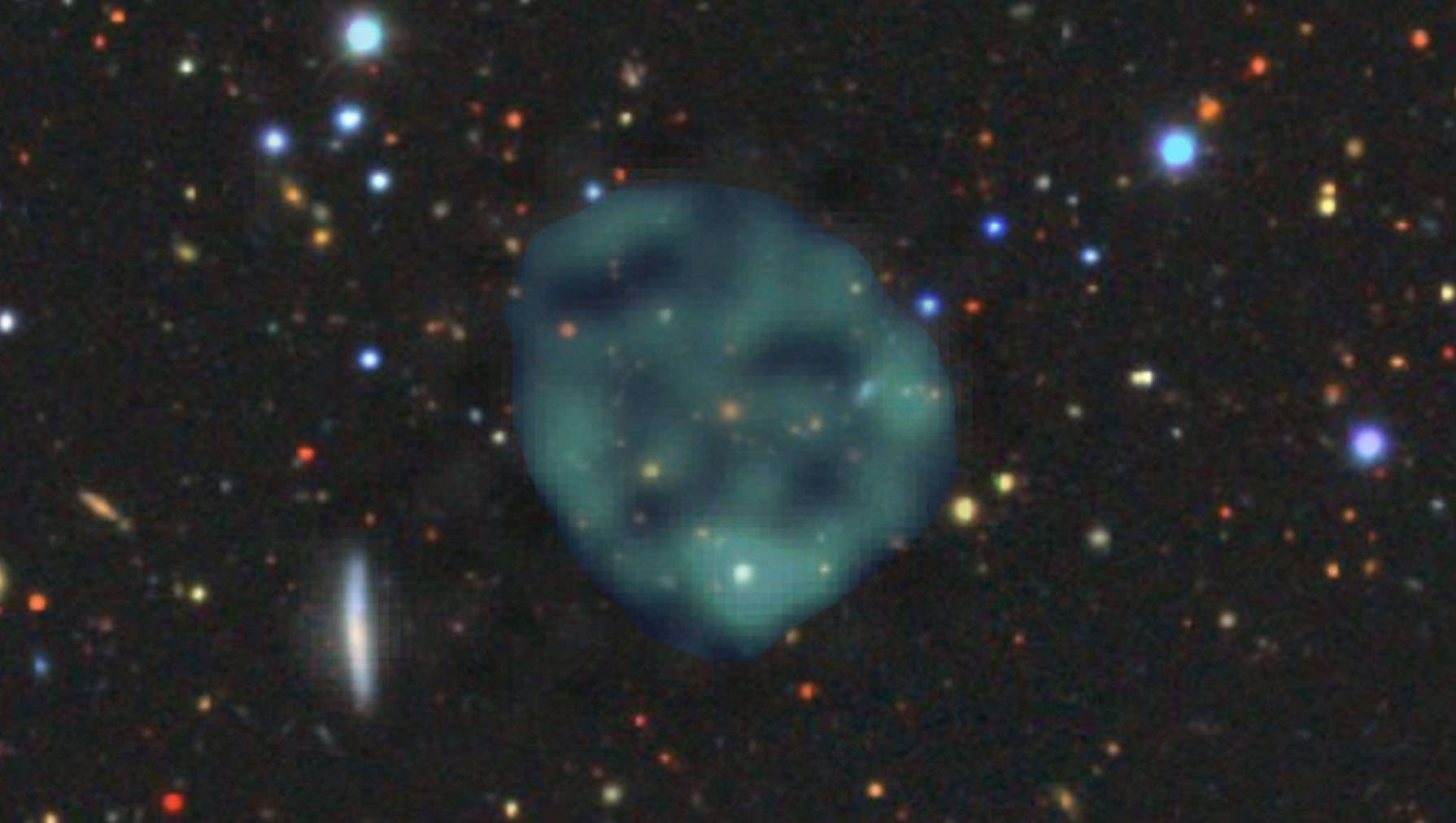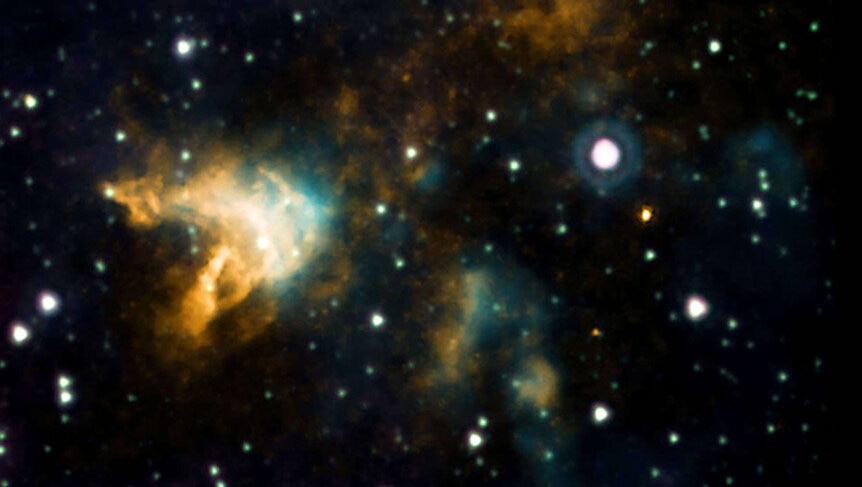Create a free profile to get unlimited access to exclusive videos, sweepstakes, and more!
Scientists can't explain these space ghosts that materialized out of nowhere

If there is one reaction so universal that even astronomers say it when they see something more alien than space itself, it’s WTF?!
WTF is actually now a thing when it comes to classifying objects in space whose origin no one can figure out. That was exactly what a team of astronomers called two mysterious ghostly circles of radio emission, not unlike the ectoplasmic globs in photos that many people swear are ghosts, appeared in new telescope data. These objects are actually radio emissions that the team have named ORCs (Odd Radio Circles), and fall into the officially unofficial category of WTFs that seem like they shouldn't exist. So WTF are they?
Already ruled out are supernova remnants, emissions from star formation, stuff spewed out by a supermassive black hole, and radio waves from a distant galaxy (radio emissions don’t necessarily mean radio waves). CSIRO (Commonwealth Scientific and Industrial Research Organization) is using its new superpowered Australian Square Kilometer Array Pathfinder (ASKAP) Telescope to create the Evolutionary Map of the Universe. It will map even the furthest and faintest objects in the universe, which could be ghosts of phenomena that occurred billions of years ago as the universe began to evolve. Then these things had to show up.
“The rings of radio emission are probably caused by clouds of electrons, but why don't we see anything in visible wavelengths of light? We don't know,” CSIRO astronomer Bärbel Koribalski, whose colleagues Anna Kapinska and Emil Lenc first got a shock from them while looking over ASKAP images, told The Conversation.
What they are is an enigma, but the team can definitely tell what they aren’t.
Supernova remnants are clouds of star stuff left in the wake of astral explosions. Sometimes, the enormous balls of gas otherwise known as stars live fast and burn out hard. Stars live off of nuclear fusion that takes enormous amounts of energy to fuse helium atoms into hydrogen atoms. That cosmic gas tank doesn't last forever. Either a star will burn so much nuclear fuel that some of its mass invades its core, making the core heavy enough to collapse and go supernova, or one star in a binary star system will cannibalize the other and explode.
The problem is, there are way too many supernova remnants in the universe already. There is no way the ORCs, which were never seen before, could be something that has been observed again and again.
So with supernova remnants out, could these mysterious radio emissions be a by-product of galaxies experiencing a boom in star formation? Unlikely. While rings of radio emissions are seen coming from galaxies that are pumping out stars, and radio luminosity, whose wavelengths are too long for the human eye to see, is proportional to the rate of star formation, the ORCS do not appear to be near any such galaxy.
It isn’t even likely that they come from a radio galaxy—a galaxy that emits radio wavelengths—like radio powerhouse Cygnus A. While supermassive black holes will vomit jets of electrons that show up as huge blobs of radio emissions in a radio galaxy, the ORCs are too circular to qualify. Gravity sometimes bends radio waves from faraway galaxies into objects called Einstein rings, but the ORCs are much more eerily symmetrical. Some more imaginative scientists are even suggesting they are the necks of possibly traversable wormholes.
What ASKAP saw is such anomaly that it is difficult to tell whether the objects are just a few light-years across or millions of times more immense, and if they are floating somewhere in our galaxy or in a galaxy far, far, far away.
Maybe when upcoming space telescopes like NASA’s James Webb finally take off, the ORCs will finally reveal WTF they are.















